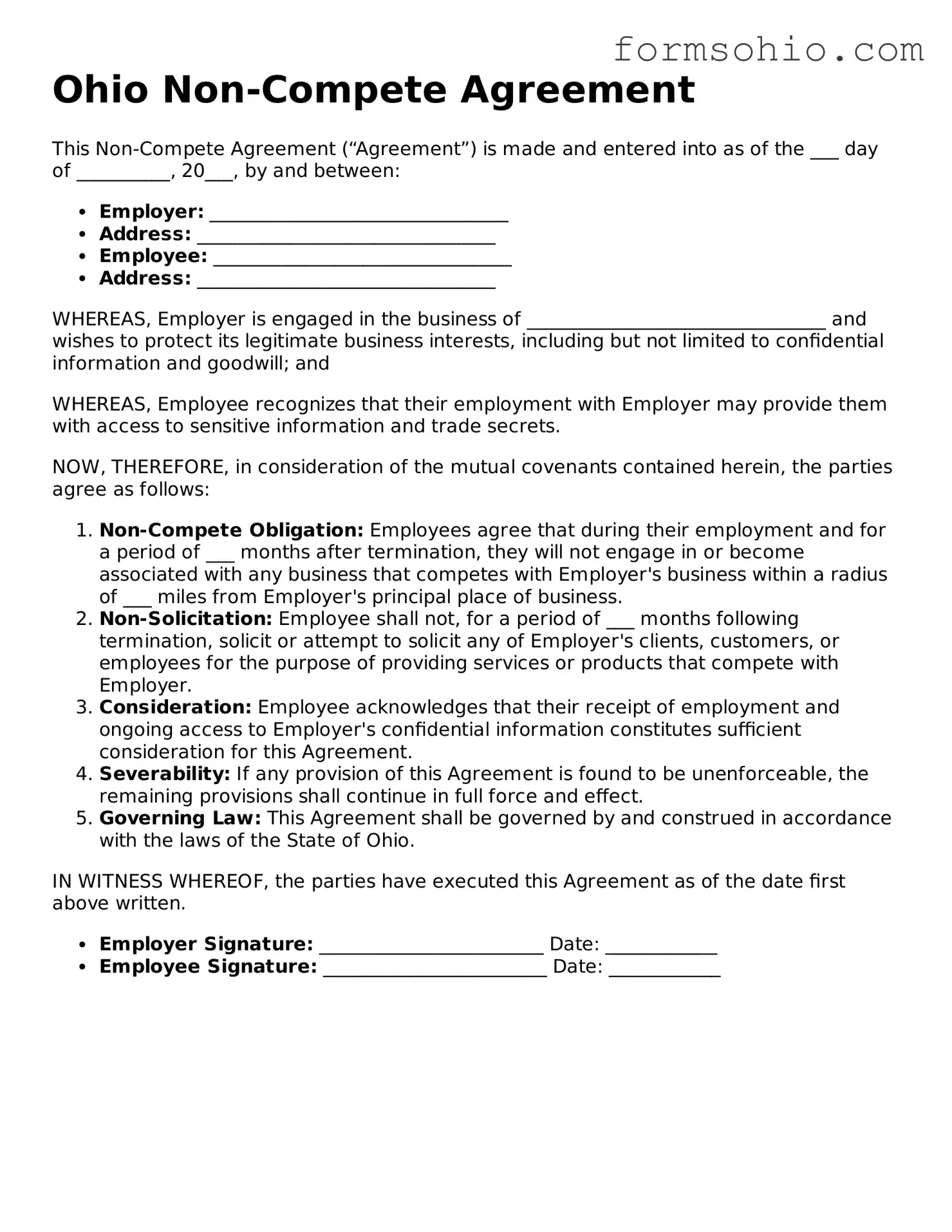When filling out the Ohio Non-compete Agreement form, individuals often overlook critical details that can affect the enforceability of the agreement. One common mistake is failing to clearly define the scope of the non-compete. A vague description of the restricted activities can lead to confusion and potential legal challenges. It’s essential to specify what types of work or business activities are prohibited after leaving the company.
Another frequent error is neglecting to include a reasonable duration for the non-compete. Ohio law requires that the time frame be reasonable and not overly restrictive. A non-compete that lasts for an excessively long period may be deemed unenforceable by a court. Therefore, it’s crucial to choose a duration that balances the interests of both the employer and the employee.
People also often forget to consider geographical limitations. A non-compete agreement should specify the geographic area where the restrictions apply. A broad or overly expansive geographic scope can raise questions about the agreement’s fairness and legality. Clearly defining this area can help ensure that the agreement is enforceable.
In addition, some individuals fail to recognize the importance of mutual consideration. In Ohio, for a non-compete to be valid, there must be something of value exchanged between the employer and the employee. This could be a job offer, training, or access to proprietary information. Without this mutual consideration, the agreement may not hold up in court.
Another mistake involves not consulting legal counsel. Many people attempt to navigate the complexities of non-compete agreements on their own. This can lead to misunderstandings about the law and the specific terms of the agreement. Seeking professional advice can help ensure that the agreement complies with Ohio law and protects the interests of all parties involved.
Additionally, individuals sometimes overlook the need for a signature. An unsigned agreement may not be enforceable. Both parties should sign and date the document to indicate their acceptance of the terms. This simple step is crucial for ensuring that the agreement is valid.
People also tend to underestimate the importance of reviewing the agreement regularly. Non-compete agreements should be revisited periodically to ensure they remain relevant and enforceable. Changes in business operations or industry standards may necessitate updates to the agreement.
Moreover, some individuals fail to communicate the non-compete terms effectively. Employees should be made aware of the non-compete agreement before they sign it. Clear communication about the implications of the agreement can prevent misunderstandings and disputes down the line.
Lastly, neglecting to keep a copy of the signed agreement is a common oversight. Both parties should retain a copy for their records. This ensures that everyone involved has access to the terms of the agreement, which can be invaluable in the event of a dispute.
